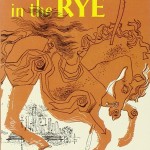
PROTAGONISTS AND ANTAGONISTS
The characters in your story, whether fiction or nonfiction, function like the dramatis personae in a play. They do not exist in isolation, but in relationship to the other characters, the plot, and setting.
For example, most stories have a protagonist and an antagonist, though the form of the relationship varies from genre to genre. The protagonist is often the main character in the story, while the antagonist is the person or thing the protagonist struggles against. A strong story will allow for a balance between these two opposing characters; if one or the other is too predictable or weak, the story will suffer. We will discuss how to fix this in the Seattle Writing Course.
The plot of the story revolves around the protagonist. The term ‘protagonist’ comes from ‘protagonistes’ – a Greek word meaning one who plays the first part or the chief actor. While the protagonist is a hero in most of the stories, he or she can be a villain as well, as in Truman Capote’s In Cold Blood. While an antagonist need not necessarily be a person, the protagonist is almost always a person. The list of fictional protagonists includes Holden Caulfield in The Catcher in the Rye, Jake Barnes in The Sun Also Rises, Ishmael in Moby Dick, or Mrs. Ramsay in Virginia Woolf’s To the Lighthouse. Memorable nonfictional protagonists include Tobias Wolff in This Boy’s Life , Mary Carr in The Liar’s Club or Chuck Yeager in Tom Wolfe’s The Right Stuff.
In the Seattle Writing Class, we’ll discuss how to create strong protagonists and antagonists, essential elements of a strong story.
For more, please consider signing up for my spring Seattle Writing class, The Nature of Narrative.
 The Writer's Workshop
The Writer's Workshop 











